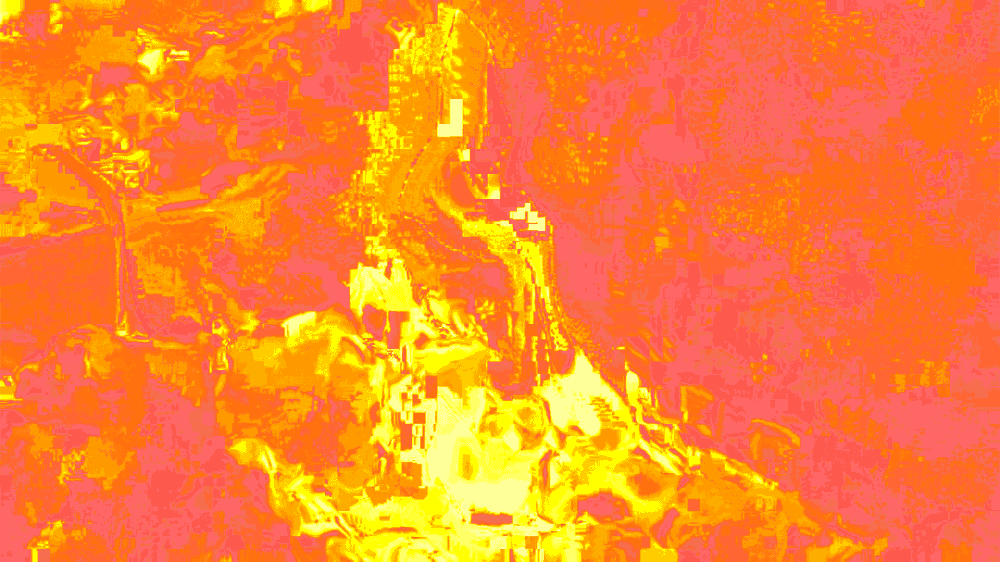William Mansfield
Inferno
Exhibition Essay | Firstdraft 2016
Abandon all hope, ye who enter here…
So read the apostrophic words inscribed above the entrance to William Mansfield’s Inferno. Plucked from the eponymous first canticle of Dante’s epic poem Divine Comedy, the oft-quoted admonition adorns the gates of Hell through which Dante passes on his allegorical tour of the underworld. Both plea and demand, these words summon our collective cognizance of death, which becomes a shadowy spectre that follows us through the inflatable jaws of Satan and into the faux fiery bowels of Hell.
The concept of death and the afterlife, as understood empirically, existentially and imaginatively, lingers on the periphery of our consciousness, always already awaiting cogitation. Mansfield’s Inferno taps into a rich historical lineage of religious and mythological vernaculars surrounding hell. Contemplations of the afterlife colonise the Western literary canon, from Homer’s depiction of Hades in TheOdessey and Aeneas’ journey into the underworld in Virgil’s Aeneid, to Shakespeare’s famous ruminations on the ‘undiscovered country’ in Hamlet and Milton’s characterisation of Satan in Paradise Lost. The historical DNA of art is likewise saddled with conceptions of heaven, hell and an immortal soul, manifesting most emblematically in the codified tradition of memento mori – a cultural ideograph that precipitates the awareness of our own mortality. With roots as far back as Plato’s Phaedo, artistic representations of memento mori in the European Christian context proliferated in the medieval period, coinciding with a shift toward more graphic images of hell at a time of heightened focus on the fate of the individual.
Consciously partaking of this heritage, Inferno spotlights that repressed reality belying our death-denying culture of euphemism and sublimation, galvanizing our collective nausea about mortality at a time when people’s beliefs are no longer institutionally embodied. However Mansfield buttresses this grim ontological and existential currency with humour, poking fun at the religious edifice of damnation. Far from Dante’s inventive allusions in which sinners are afflicted with punishments appropriate to their sins, the installation supplants the pathos of perdition with a kind of cheap, tragicomic amusement. Kitsch infernal imagery launches a frontal attack on religious iconography by hyperbolising the absurdity of historical conceptions of Hell. Recalling the Catholic school masses and liturgies of his own childhood, Mansfield appropriates the aesthetic bounty of Catholicism – gaudy performances, vibrant colour, symbolism and craft – while also enlisting cinematic clichés and cultural references. After entering through the gaping jaws of a nostalgic theme park-esque devil, audiences are confronted with inflatable dancing flames that mimic the flailing AirDancers synonymous with car yards, perhaps refracting recent critical affiliations of capitalism with hell. We find ourselves lost in something that resembles revenant scenes from our childhood à la Ikea’s ball-pit, amusement park funhouses and ghost trains. The unrelenting perdition prescribed in Mansfield’s youth has slackened into a theatrical playpen.
Yet this surrogate relationship between horror and humour is not absolute, for while Inferno may at first seem sarcastic and playful, it slyly thieves our comfort. Physically, visually and aurally it saturates the space, reminding us that we’re in post-mortem terrain where the basic dimensions of time and space are not relevant. Claustrophobic red strobe lighting and murky smoke agitate our physiological and psychological equilibrium while the synthetic flames intrude on our personal space, presenting damnation in visceral and concrete terms. This sensory assault is magnified by a disorienting soundscape of revolving menacing laughter, an incessant Shepard tone and crackles of fire. Hell incarnate can indeed be seen, smelt, felt and heard, embodying Dante’s own intimation that this netherworld cannot be articulated verbally but rather experientially: ‘the tongue must wag in vain; the language of our sense and memory lacks the vocabulary of such pain’.
The work also tramples on our psychological space by crystalising our cognizance of terror. Since the earliest Greek Epics, society has imagined an Underworld, a murky subterranean realm beneath the Earth that houses damned souls. In Dante’s Inferno, Hell is a dystopic underground city indicating its moral position in the Christian universe. That Mansfield’s installation sits aboveground literalises the idiom of ‘hell on earth’. It proposes the contiguity of contemporary existence and perdition, pointing towards the epidemic of terror that plagues public consciousness. At a time when differences in religion have hatched a global crisis and widespread nomenclature of ‘evil’, the concept of infernal punishment seems all too pertinent. In the same vein, Inferno subverts the Christian understanding of time as a linear narrative from the Creation to the Last Judgment by conveying time – specifically our trajectory from life to death – as a mishmash of realms. Life, death, heaven and hell are not antonymic entities that sit on a qualifiable timeline, but rather they are always already present. Hell may be found on earth, death can be felt in life, heaven may not exist at all.
Mansfield’s installation is thus a blazing crucible of dichotomies – it is at once theological and fiercely irreligious, poignant and playful, historical and conspicuously contemporary.
